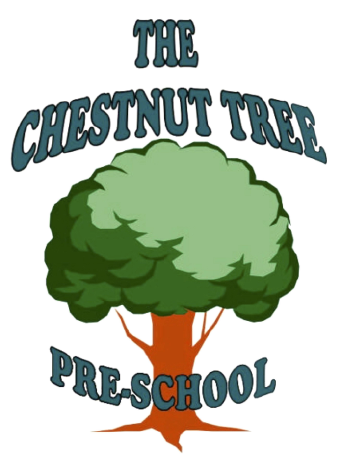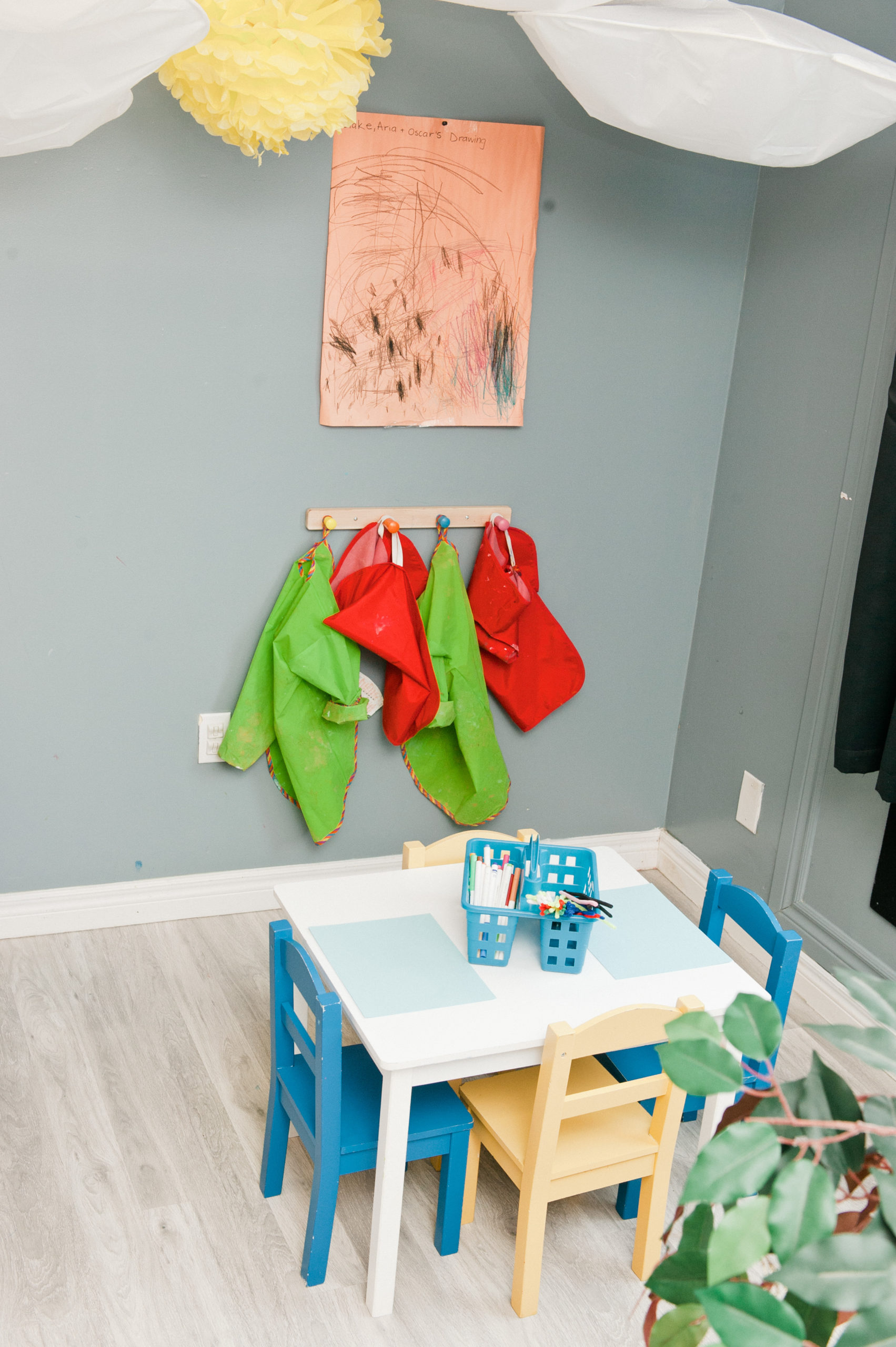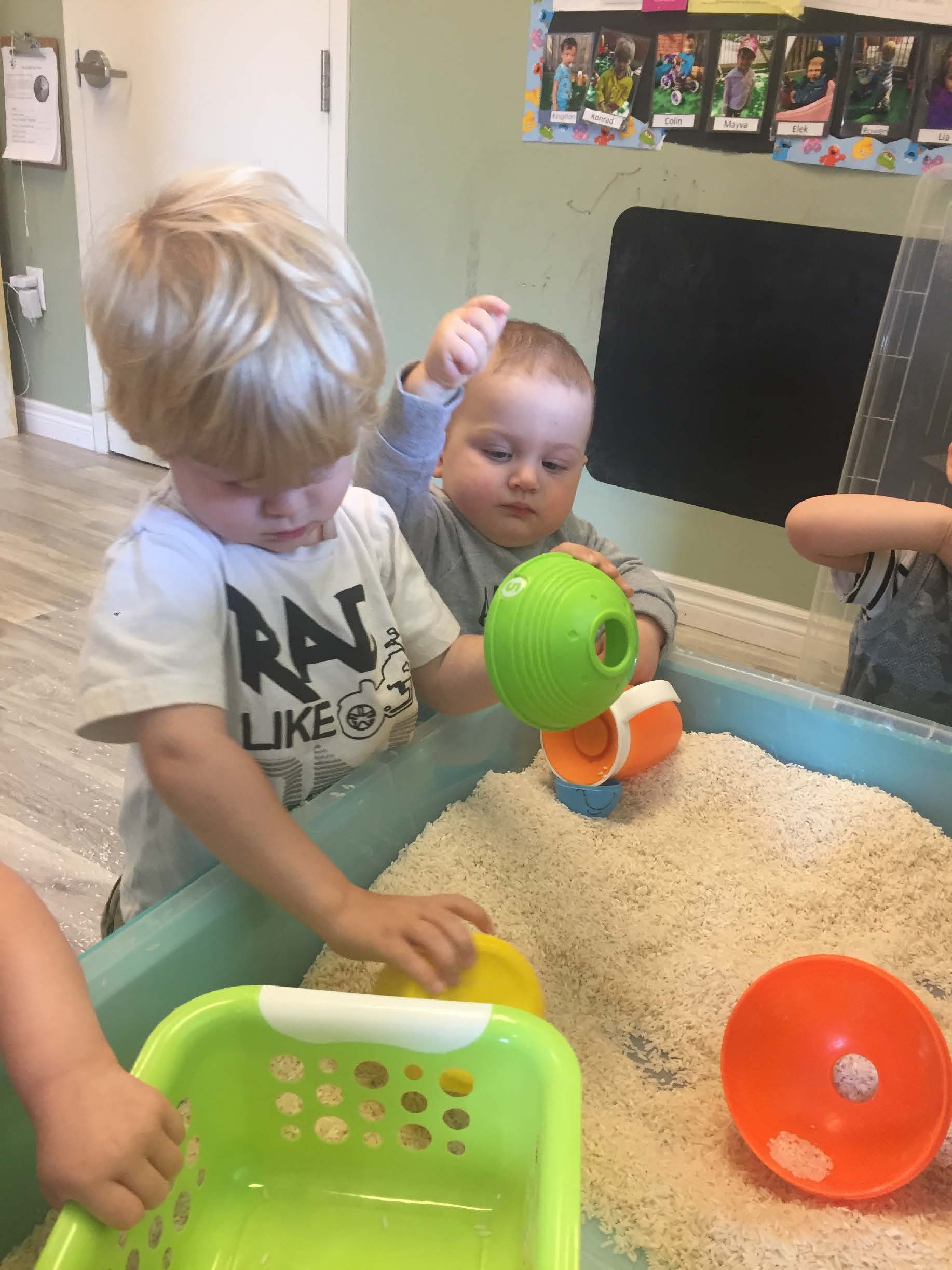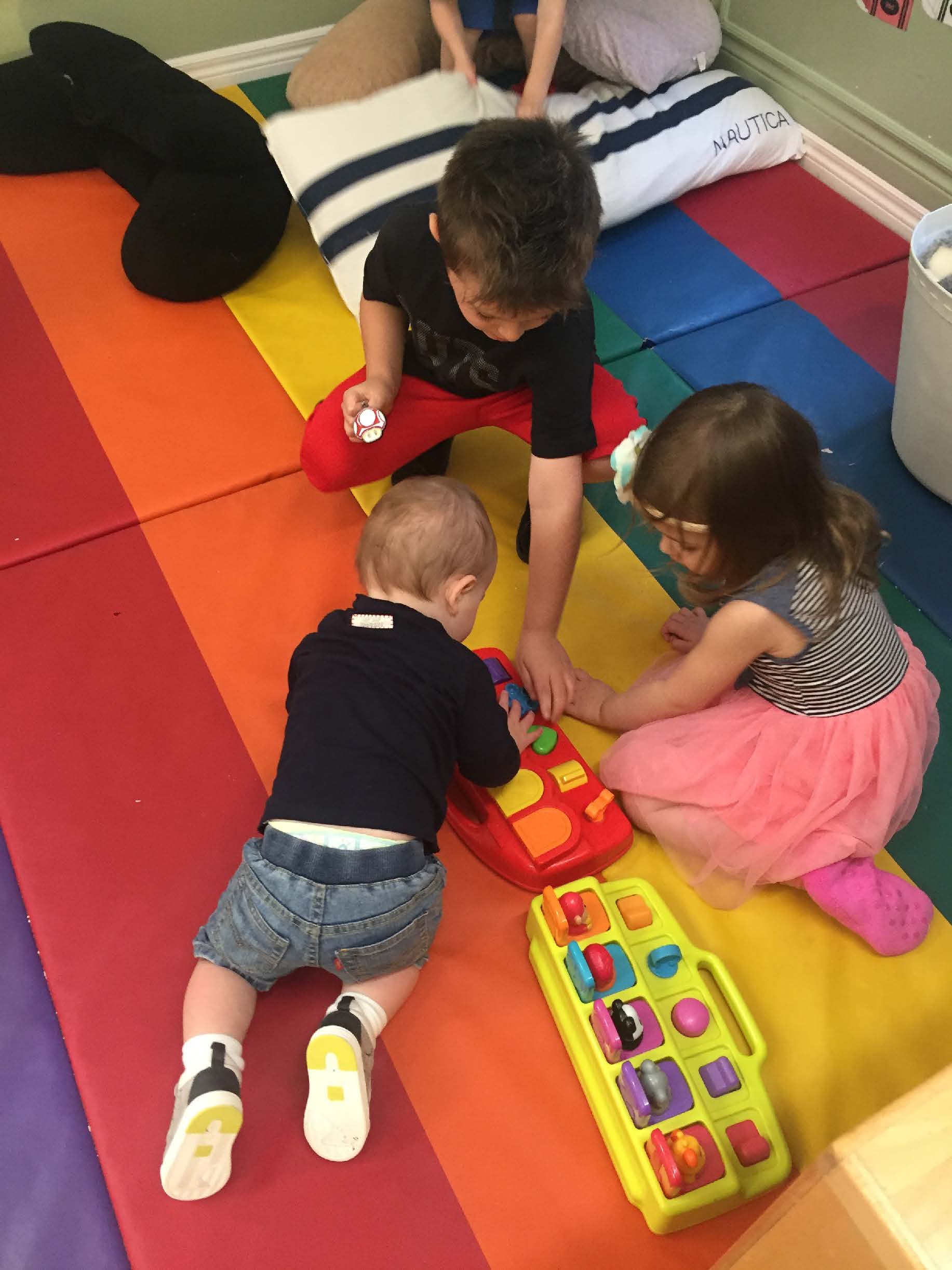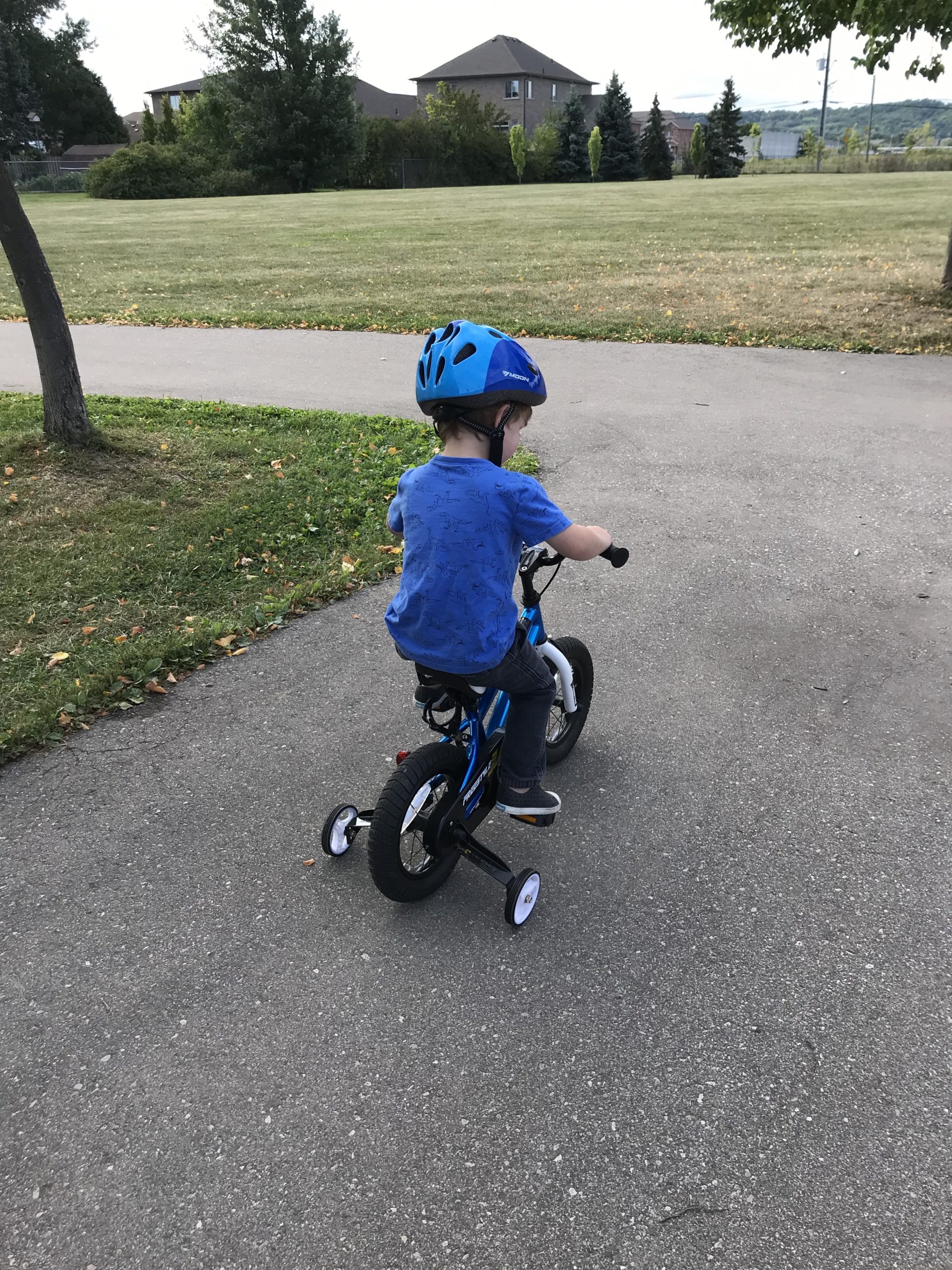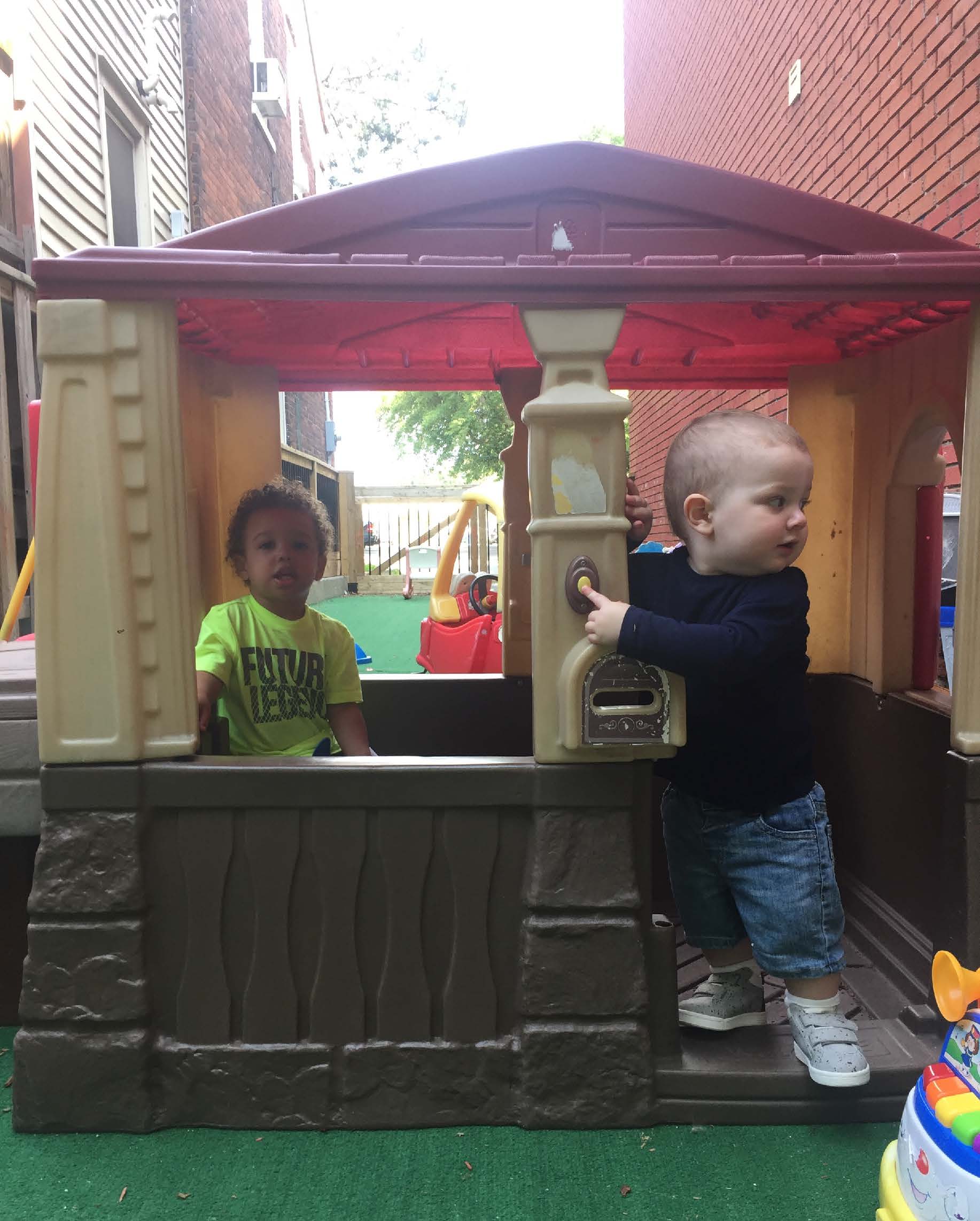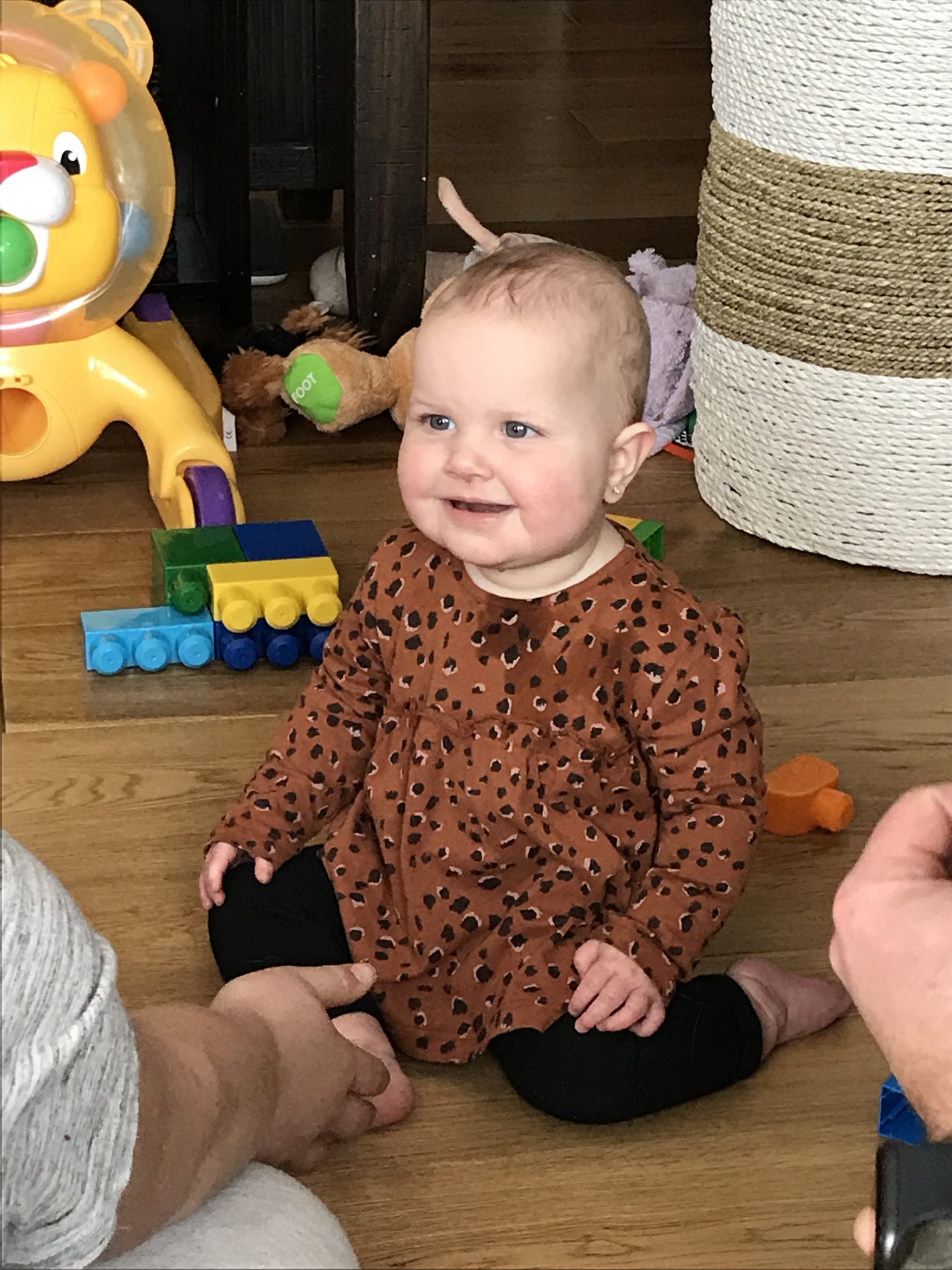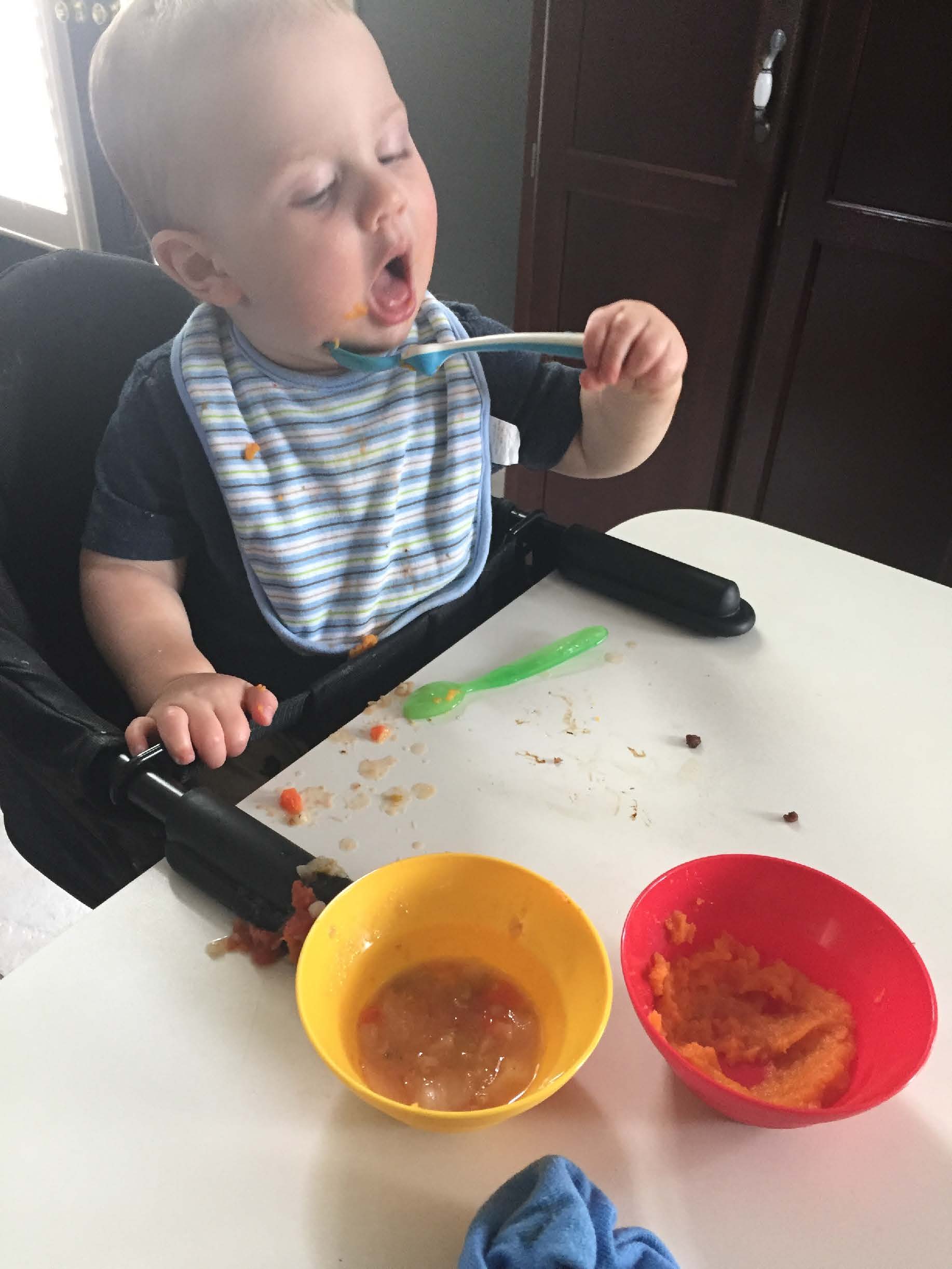Communication and Language are closely linked to the other areas of the child’s development and is central to his/her ability to communicate in relationships and understand ideas and concepts which can then be ordered, explored and refined.
An infant develops communication skills at a very young age. Even though young infants do not understand or produce words, they are learning that when they produce a noise, they get a response. Therefore, they are learning that the purpose of their attempts to make sounds results in their needs being met. Subsequent communication that develops includes gesture, facial expression, and body movement as well as verbal and receptive language abilities.
Toddlers expand their communication and language by using babbling or jargon talk. First words begin to emerge. Talking to the toddler about the world around him/her by naming and describing everything is very important. This is a critical time for language development. It is known that children learn to understand language much earlier than they can actually speak. Even though a child cannot talk to you about what they are experiencing, their rapidly developing minds are absorbing information like a sponge. At the beginning of 2 years of age, many children have about 200 words in their repertoire, and towards the end of the second year, typically have attained about 1000 words, which will be expressed through 2, 3, possibly 4 word sentences.
By the time a child is pre-school age, many children can use language to communicate what they need to say to both adults and other children. This enables them to develop social relationships and understand that communication is mutual give and take. Three year olds typically have more than 1200 words in their vocabulary, even though they still understand more than they can speak. They can answer questions and tell about experiences in their lives. They’re increasing competence with language enables them to develop friendships with other children and relate more effectively with adults. Between the ages of 4-6 years, children continue to develop skills in this area, leading to the ability to start to put words to print.
